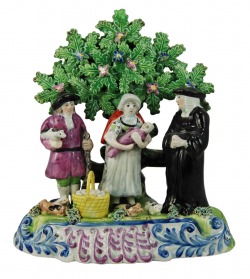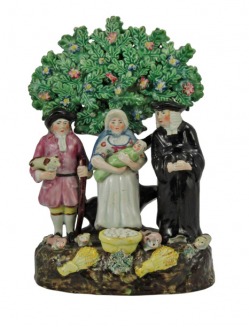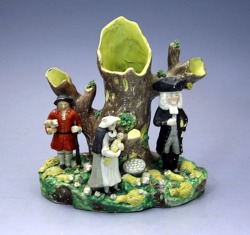In the early 19th century, the centuries-old practice of tithing, or giving 1/10 of your produce, to the church prevailed--and it was unpopular and contentious. Read my book if you want to know the gritty details, and they are fascinating. If you tithed milk, did you have to deliver the milk to the church or did the vicar have to come and milk the cow? If you gave every tenth lamb, could you offer the runt of the litter? And what if the litter comprised only 5 lambs?
Tithing was contentious to say the least. The proceeds were used to support the Church of England, yet people of every religious bent had to pay it! And because tithes were primarily an agricultural tax, the economic output of merchants, manufacturers, and bankers escaped taxation. Gallows humor surfaced to deride this hated form of taxation. In 1751, Boitard engraved a humorous scene showing the farmer and his wife giving 1/10th of their produce to the parson--and included was their tenth child! By 1765, Derby had mimicked this in a porcelain vignette, and by the early 1800s the Staffordshire potters were doing the same.
Two Staffordshire tithe pig bocage groups around 7-1/2" tall. Both are from the stock of Elinor Penna..
Tithe pig figure groups also occur without bocages but with spillholders. These groups tend to have largish footprints. Boitard's inspirational engraving is found also on early transfer printed creamwares. From 1833, England started a process of reforming the tithing process, which culminated in the Tithe Act of 1936 (yes 1936)...but final payments to tithe owners only came about in 1996!
Staffordshire tithe pig figure with spill holder. From the stock of John Howard. H: ~8".

And the art work that started it all: Boitard's engraving that Staffordshire's potters mimicked in clay.
















